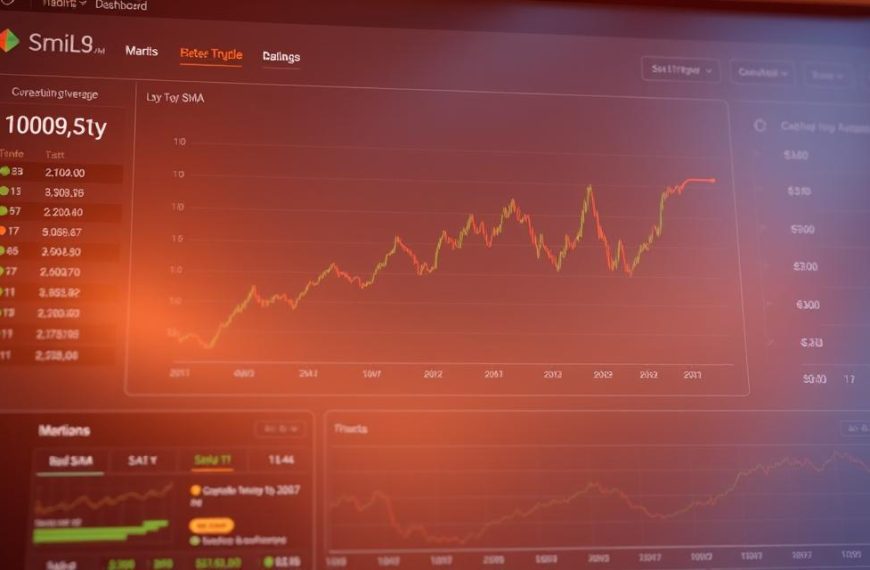Cryptopia, once a leading cryptocurrency exchange, faced a catastrophic security breach in January 2019. The hack resulted in a staggering $16 million theft of digital assets1. This event shook the digital currency world and cast doubt on Cryptopia’s future2.
The attack revealed serious flaws in Cryptopia’s security system, forcing its abrupt closure. Trading was halted, and the exchange entered a complex liquidation process2. Some estimates suggest the losses could have reached a whopping $20 million3.
Cryptopia’s fall from grace serves as a stark reminder of crypto’s inherent risks. It highlights the crucial need for robust security and transparency in digital asset platforms1.
The burning question now is: can Cryptopia ever make a comeback? The road to recovery is fraught with obstacles1. Only time will tell if this once-thriving exchange can rise from the ashes.
The Rise and Fall of Cryptopia Exchange
Cryptopia was a pioneering altcoin exchange that changed cryptocurrency trading in New Zealand. Rob Dawson and Adam Clark founded it in 2014. The platform offered traders access to a wide range of digital assets4.
Cryptopia’s unique approach attracted digital investors seeking opportunities beyond mainstream platforms. Its innovative strategy set it apart in the cryptocurrency market.
Remarkable Growth Trajectory
Cryptopia’s growth was impressive. The platform expanded from 30,000 users in early 2017 to 1.4 million by January 201845. This rapid expansion showcased Cryptopia’s rising popularity.
- Rapid user base expansion
- Listing over 400 cryptocurrencies
- Daily trading volume exceeding $1 million in 20174
Market Positioning
Cryptopia ranked among the top 100 cryptocurrency exchanges globally. It even surpassed the New Zealand Stock Exchange in trading volume5. The platform supported trading across 900 different currencies, making it a versatile altcoin exchange5.
Unexpected Challenges
In January 2019, Cryptopia faced a devastating security breach. Hackers stole about 10% of its cryptocurrency assets, valued at NZ$24 million5. This affected around 900,000 users.
The hack led to Cryptopia’s liquidation in May 2019. This marked a tragic end to the exchange’s remarkable journey45.
Understanding the $16 Million Cryptocurrency Theft
The Cryptopia hack exposed major flaws in digital asset exchanges6. Cybercriminals stole about $16 million worth of cryptocurrency from 14 to 17 January 20196. This breach shook the crypto world to its core.
Cryptopia had grown to 300,000 user accounts during the 2017/2018 Bitcoin boom6. The theft highlighted the urgent need for better security measures. It showed how vulnerable even big exchanges can be.
- The hack targeted multiple cryptocurrency types, including Ether and ERC-20 tokens
- Trading on the exchange was immediately suspended6
- Forensic investigations were launched to trace the stolen digital assets
The hack led to a complex liquidation process. Grant Thornton New Zealand was appointed to manage the aftermath6. This event highlighted the challenges in protecting digital assets.
The Cryptopia incident shows that no exchange is completely safe. Investors must be careful and choose platforms with strong security measures. Protecting digital assets should be a top priority for all crypto users.
The Liquidation Process and Grant Thornton’s Role
Cryptopia’s liquidation is a complex legal journey through the world of cryptocurrency assets. Grant Thornton has been crucial in navigating the challenging landscape of digital asset recovery7.
The liquidation began in May 2019 after a devastating cryptocurrency exchange hack. Grant Thornton took on managing the extensive digital asset portfolio7.
Appointment of Liquidators
David Ruscoe and Russell More from Grant Thornton became official liquidators. Their duties included reconciling user accounts, valuing cryptocurrency assets, and managing claims.
The team engaged with 93,700 claimants during the liquidation process7. By December 2022, 84.5% of users had taken part in some form of claims procedure7.
Current Status of Assets
At its collapse, Cryptopia had about 800,000 users with positive balances. The funds totalled over US$100 million7.
The High Court of Christchurch estimated cryptocurrency holdings around NZD 170 million7.
Legal Framework Challenges
The liquidation process revealed critical challenges in cryptocurrency asset management. Over 10,000 verified account holders recently received their first cryptocurrency distributions8.
More than $400 million NZD in cryptocurrency has been returned on-chain within 48 hours8. Grant Thornton has spent about NZ$459,727 in the last eight months7.
Their total liquidation costs have exceeded NZ$20.5 million7.
Is Cryptopia Coming Back?
Cryptopia’s future looks grim. The exchange, once home to 1.4 million users, is now in liquidation. This process has dragged on for nearly six years since the 2019 hack9.
Recovery efforts have been tough. Cryptopia lost about NZD $30 million (£17.85 million) in the cyberattack10. Liquidators are working hard to return assets to affected users.
Some progress has been made. Over 10,000 verified account holders have received partial payouts9. Bitcoin distributions valued at $98,515.59 have been made9.
- Over 10,000 verified account holders received partial payouts9
- Bitcoin distributions valued at $98,515.599
- Potential “top-up” payments to recover up to 100% of lost funds9
Resuming cryptocurrency trading seems unlikely. New Zealand courts have ruled that all crypto assets belong to individual account holders11. Liquidators will continue the claims process, requiring strict know-your-customer procedures for asset recovery10.
Important Note: Do not deposit funds into historic Cryptopia deposit addresses.
The liquidation process continues to prioritise account holder interests over general creditors10.
The Complex Process of Asset Recovery
Cryptocurrency reconciliation poses unique challenges in Cryptopia’s asset recovery. The digital wallet management complexity arises from technical and legal obstacles. These issues have hindered the exchange’s liquidation efforts12.
The main problem stems from commingled wallet structures. These blur the lines of individual user asset ownership. Cryptopia’s unique cryptocurrency storage method created significant hurdles for precise asset attribution13.
Commingled Wallet Challenges
Digital wallet management becomes tricky when cryptocurrencies are pooled together. The key challenges include:
- Inability to definitively trace individual user holdings
- Lack of transparent transaction records
- Complex cryptographic tracking requirements
Customer Database Reconciliation
Rebuilding accurate user records requires careful forensic accounting. Over 10,000 verified account holders are affected by the recovery process13. The liquidation team must:
- Verify historical account balances
- Cross-reference blockchain transactions
- Validate user claims against existing records
Legal Classification of Cryptocurrencies
The legal status of digital assets remains unclear. Cryptopia’s case highlights the complex challenges of classifying cryptocurrencies as property. This makes asset recovery a tricky legal endeavour14.
About $400 million in cryptocurrencies are being returned to affected users. This recovery process marks a significant milestone in cryptocurrency exchange liquidation1214.
Customer Claims and Asset Distribution
Cryptopia’s user claims process marks a crucial step in the exchange’s recovery. Account holders can now expect a structured approach to cryptocurrency refunds and asset distribution15.

The liquidation process involves a thorough strategy for recovering and distributing digital assets. Key aspects include a claims valuation date and distribution timelines.
The first distribution is expected within three months of the judgment date15. Primary cryptocurrency distribution is anticipated by the end of 202416.
- Claims valuation date set for 14 May 201915
- First distribution expected within three months of the judgment date15
- Primary cryptocurrency distribution anticipated by end of 202416
Eligible account holders must complete a rigorous verification process. The claims portal will require specific documentation and wallet address confirmation16.
Participants should prepare for identity checks, wallet address documentation, and anti-money laundering compliance procedures.
- Identity verification procedures
- Wallet address documentation
- Anti-money laundering compliance checks
| Distribution Stage | Expected Timeline | Recovery Percentage |
|---|---|---|
| Initial Distribution | Q3/Q4 2024 | 50% of entitlements16 |
| Supplementary Distribution | Mid-2025 | Up to 100% potential recovery15 |
Important Note: Some account holders may be ineligible for distribution. This applies to those with balances below the cost of trust administration15.
Official channels will provide precise communication to prevent potential scams16. The process prioritises transparency and fairness for affected users.
Cryptopia’s asset distribution showcases a meticulous approach to resolving complex cryptocurrency recovery challenges. It aims to ensure fair treatment for all affected users.
Legal Status of Cryptocurrency Holdings
Court decisions have drastically changed digital asset regulation. Cryptocurrency legal status is now a key focus, especially in exchange liquidations like Cryptopia.
These rulings provide vital clarity for digital asset regulation. They also set important precedents for understanding digital assets.
The Cryptopia case confirmed cryptocurrencies as legal property. This decision established key criteria for classifying digital assets.
- Identifiable subject matter
- Recognisable ownership structures
- Transferability between parties
- Demonstrable stability of asset
Court Rulings on Digital Assets
Courts have defined cryptocurrencies as property under law17. Each cryptocurrency represents a distinct trust with specific legal rules18.
Regulatory Compliance Requirements
Cryptocurrency exchanges must follow strict regulatory frameworks. These include robust procedures and protocols.
- Anti-money laundering procedures
- Know Your Customer (KYC) protocols
- Asset traceability mechanisms
These changes affect more than just Cryptopia. They’re shaping global approaches to digital asset management.
Jurisdictions worldwide are increasingly recognising cryptocurrencies as legitimate financial instruments18. This recognition is changing how we view and handle digital assets.
Conclusion
The Cryptopia saga marks a pivotal moment for cryptocurrency exchanges. It highlights the crucial need for robust digital asset security19. The case reveals significant vulnerabilities in crypto platforms, with over USD $100 million owed to account holders19.
Lessons from Cryptopia stress the importance of strong security protocols and clear risk management. The thorough probe into the exchange’s downfall exposes widespread industry challenges19. It signals a pressing need for better protective measures across the sector.
Cryptopia’s future remains unclear amidst ongoing liquidation proceedings. This situation showcases the complex legal landscape surrounding digital assets19. Investors must realise that security isn’t guaranteed in the crypto world.
This case serves as a stark warning for the cryptocurrency ecosystem. It calls for better regulatory frameworks and security measures. Continuous improvement in risk strategies is vital to safeguard investments and maintain market integrity.
FAQ
What happened to Cryptopia?
Can users recover their cryptocurrency assets?
How will the claims process work?
Why is asset recovery so complicated?
Is there any chance Cryptopia will reopen?
What types of cryptocurrencies were affected by the hack?
Who is managing the Cryptopia liquidation?
How long will the asset recovery process take?
Are users guaranteed to get their assets back?
What lessons can be learned from the Cryptopia incident?
Source Links
- https://cryptonews.net/news/main/149536/
- https://coinrivet.com/cryptopia-users-must-be-patient/
- https://www.scoop.co.nz/stories/BU1901/S00530/cryptopia-might-reopen-in-february-nz-police-says.htm
- https://coinmarketcap.com/academy/article/cryptopia-the-spectacular-rise-and-fall-of-new-zealand-s-biggest-crypto-exchange
- https://en.wikipedia.org/wiki/Cryptopia
- https://www.dentonsdata.com/the-cryptopia-exchange-insolvency-and-the-importance-of-data-assets/
- https://bravenewcoin.com/insights/cryptopia-exchange-liquidator-releases-third-report
- https://www.grantthornton.co.nz/press/press-releases-2024/cryptopia-account-holders-receive-$400m-from-liquidators/
- https://www.bitdegree.org/crypto/news/cryptopia-hack-payouts-begin-225-million-in-crypto-distributed-to-users
- https://decrypt.co/42263/hacked-cryptopia-gets-one-step-closer-to-returning-funds
- https://en.coin-turk.com/cryptopia-begins-crypto-refund-process-for-account-holders/
- https://www.rnz.co.nz/news/business/537243/users-of-hacked-crypto-firm-get-millions-back
- https://en.cryptonomist.ch/2024/12/20/cryptopia-returns-225-million-dollars-to-users-affected-by-the-hack-a-historic-turning-point/
- https://thearabianpost.com/cryptopia-begins-crypto-payouts-to-users-after-liquidation/
- https://www.grantthornton.co.nz/cryptopia-limited/update-for-cryptopia-claimants-and-stakeholders-5-march-2024/
- https://www.grantthornton.co.nz/cryptopia-limited/update-for-cryptopia-claimants-and-stakeholders-20-february-2024/
- https://www.nortonrosefulbright.com/en/knowledge/publications/d6ea37bd/cryptocurrencies-are-property-capable-of-being-held-on-trust-new-zealand-high-court-holds
- https://www.applebyglobal.com/publications/whose-crypto-is-it-anyway-the-status-of-cryptocurrency-as-property-under-bvi-and-cayman-law/
- https://decrypt.co/24879/crypto-exchange-cryptopia-users-get-big-win-in-court















